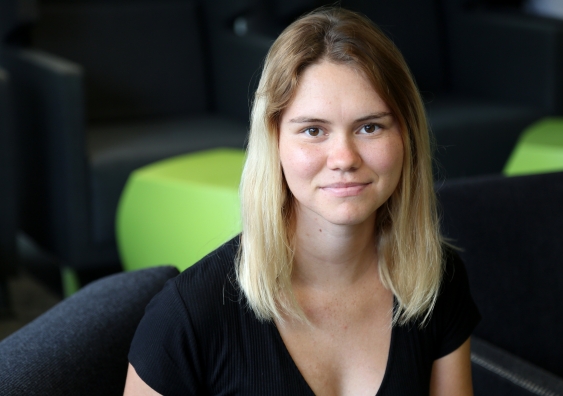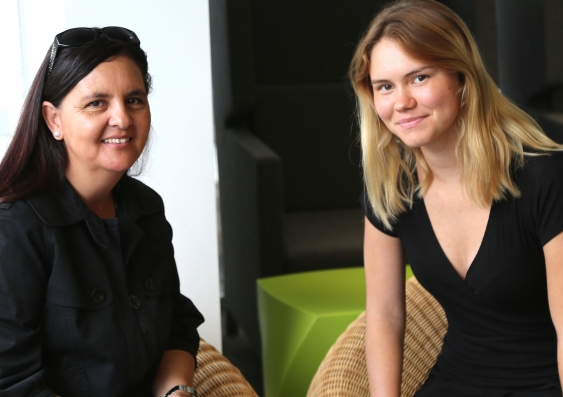Indigenous student a shining example of the power of a mentor
The first Indigenous student accepted into UNSW Medicine’s Honours program intends to pay it forward by mentoring students starting their training to become doctors.
The first Indigenous student accepted into UNSW Medicine’s Honours program intends to pay it forward by mentoring students starting their training to become doctors.

Twenty-year-old Wiradjuri woman Ashley Towney is a shining example of the transformative power of education and what can result when a child is galvanised with self-belief.
Growing up in the rural NSW town of Wellington, with few role models, Towney didn’t feel like she was capable of achieving much. That was until she met her Year Five primary teacher Ms Cheryl Ah-See.
Towney says after that school year she began to dream big.
It’s not right that children living in the country can sometimes wait up to six months to see a paediatrician. I want to make a difference to their lives and ensure they get quicker access to the specialists they need.
“Cheryl’s mentoring boosted my confidence and self-esteem. She was an inspiration to me. When I saw that an Indigenous woman could obtain a teaching degree, this made me believe that one day, I could become a doctor,” Towney says.
With Towney still undecided about the best career path as she neared the end of Year 12, after some encouragement from Ah-See, she applied for and successfully completed UNSW’s three-week intensive Pre-Medicine program, an alternative entry pathway for Indigenous students.
This week Towney begins the fourth year of her medical degree, becoming the first Indigenous person accepted into UNSW Medicine’s Honours program.

Ms Cheryl Ah-See (left), a student support officer with UNSW’s Indigenous program unit, Nura Gili and Ashley Towney, the first Indigenous student accepted into UNSW Medicine’s Honours program. Photo: Leilah Schubert.
The 12-month research program is offered to only 30 students each year – around one in ten of her class. All must achieve a distinction/high distinction average in their first three years of study.
Working under UNSW Associate Professor Nadine Kasparian, one of UNSW’s 20 Rising Stars, Towney will study the impact of anxiety on mothers and their unborn child following fetal diagnosis of congenital heart disease.
Ah-See, also from Wellington, left school teaching in 2006 to join UNSW’s Indigenous program unit, Nura Gili, as a student support officer. The program provides pathways to tertiary learning opportunities for Aboriginal and Torres Strait Islander people. UNSW has the highest retention rate for Indigenous students in Australia.
“It has been so pleasing to watch Ashley’s journey from a shy 12-year-old to a confident young woman who, given an opportunity and the right support, is now excelling at her studies and is well on the way to fulfilling her dream,” Ah-See says.
It wasn’t until Towney’s teenage years, volunteering at Nanima Pre-School where her mum is a childcare worker, that she saw first-hand some of the major health challenges facing Indigenous children. The experience solidified her ambition to ensure Indigenous families in rural areas have better access to Indigenous doctors.
Having a tutor who knows the course content and what to focus on also made a real difference. Now I want to pay it forward.
Towney’s story reflects research highlighted in the latest Closing the Gap report, which shows that Indigenous and non-Indigenous children with the same level of academic achievement at the age of 15 go on to complete Year 12 and higher education at the same rates.
It also found the target to halve the gap in Year 12 attainment for Indigenous students by 2020 is on track, one of the few shining lights in the report.
Towney says one of the keys to her academic success since beginning university has been studying in groups.
“Having a tutor who knows the course content and what to focus on also made a real difference. Now I want to pay it forward and, when I have the time, tutor medical students just starting out on their path to become doctors.”
Towney is already looking toward further training to become a paediatric cardiologist and surgeon.
“It’s not right that children living in the country can sometimes wait up to six months to see a paediatrician. I want to make a difference to their lives and ensure they get quicker access to the specialists they need.”